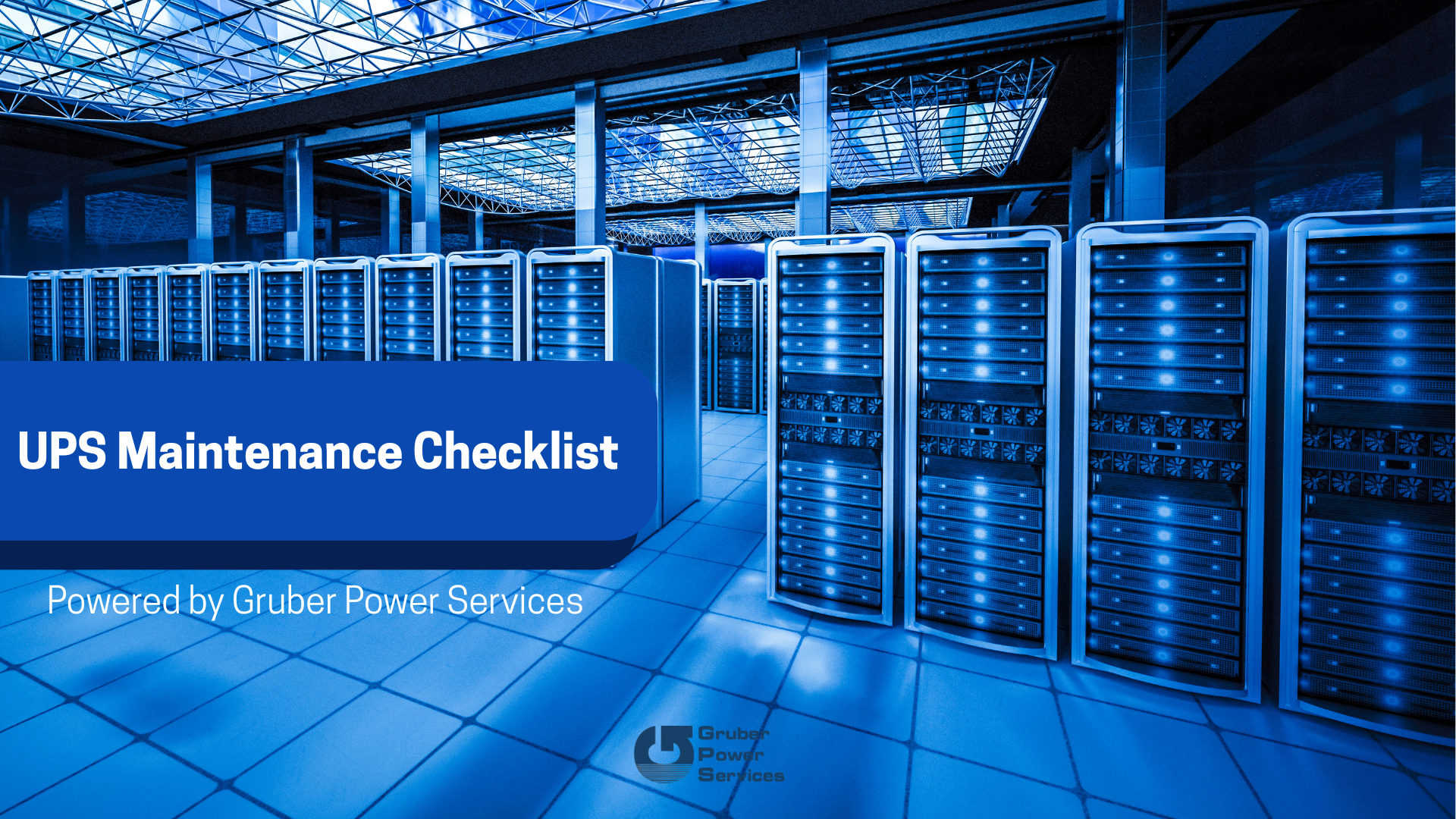
800 VDC Architectures Will
Why AI Data Centers Are Moving to 800 VDC Power Architectures How
Learn More →

Uninterruptible Power Supply (UPS) is a quiet powerhouse of your organization. It’s the only thing standing between a momentary power flicker and a catastrophic system crash. However, a UPS requires regular, planned maintenance to be prepared for that one critical moment, just like any other mission-critical piece of equipment.
The main reason UPS devices stop working is that people forget to maintain them. To ensure that your system doesn’t fail, here is a simple checklist that outlines what to check, from monthly tasks you can perform yourself to in-depth checks with professionals, conducted quarterly to annually.
One of the designated staff members needs to perform this check monthly
| Area | Check/Task | Why It Matters |
| Environment | Temperature & Airflow | Verify the room temperature is stable (ideally ∼77°F/25°C). Ensure all intake and exhaust vents are clean and unobstructed. Heat kills batteries and electronics. |
| Visual | Exterior Inspection | Check the UPS cabinet and all battery enclosures for any signs of physical damage, corrosion, or unusual odors (a sulfuric smell can indicate a venting or charging issue). |
| System Status | Check the Display | Review the front panel, LCD screen, or monitoring software for active alarms, fault codes, or warnings. Log and acknowledge any events. |
| Cabling | External Power Cables | Visually inspect the main input/output cables for any fraying, splits, or heat discoloration at the connection points. |
| Operational | Run the Self-Test | Execute the UPS’s built-in self-test feature. This usually puts a momentary load on the battery to check its basic functionality. |
Every quarter, make sure you have an experienced service technician perform a thorough preventive maintenance inspection on all critical systems.
| Area | Check/Task | Why It Matters |
| Battery Health | Measure Individual Cell Voltage | Identifies weak or degrading cells within the battery string before they cause a full battery failure during an outage. |
| Measure Post & Ambient Temp | High temperatures at battery posts indicate high resistance (a likely loose connection). Excess ambient heat severely shortens battery life. | |
| Electrical Integrity | Inspect for Internal Damage/Wear | Visually check inside the cabinet for loose connections, burned or melted wire insulation, and any signs of excessive heating, which are precursors to component failure. |
| Operational Check | Verify Load Levels | Confirms the critical load remains balanced and safely below the UPS’s maximum capacity, ensuring the system can handle the load if an outage occurs. |
| Monitoring System | Test Alarm Functionality | Verifies both local and remote (network) alarms are working, ensuring personnel are immediately notified when a fault or power event occurs. |

Semiannually, make sure you have an experienced service technician perform a comprehensive deep cleaning and recalibration of all critical systems to ensure optimal performance.
| Area | Check/Task | Why It Matters |
| Battery Health | Detailed Visual Check | Inspect individual battery cells/blocks for swelling, bulging, cracking, or leakage. Clean any corrosion from terminals to reduce resistance. |
| Voltage Readings | Measure and record the overall float voltage of the battery bank and the float voltage of a minimum of 10% of individual cells. Deviations indicate a bad charging rate or a weak cell. | |
| Functional Test | Load Transfer | Simulate a brief utility power failure to confirm the UPS transfers smoothly to the battery and back again without disturbance to the critical load. |
| Cooling | Fan & Filter Service | Inspect cooling fans for excessive wear or noise and test their operation. Clean or replace air filters based on the environmental conditions to ensure optimal internal temperatures. |
| Bypass | Bypass Switch Test | Verify the functionality of the Maintenance Bypass Switch (MBS). This is a crucial safety component that allows you to isolate the UPS electronics for maintenance while the load remains powered. |
This is a critical, mandatory annual inspection that must only be conducted by expert, certified technicians.
| Area | Check/Task | Why It Matters |
| Electrical Integrity | Thermal Imaging (IR Scan) | Use an infrared camera to scan all internal components, circuit breakers, and terminals under full load to identify “hot spots” caused by loose or corroded connections. |
| Torque Verification | De-energize the unit and physically verify the torque of all major power connections (bus bars, input/output connections, etc.) using a calibrated torque wrench. | |
| Battery Health | Impedance Testing | Measure and record the internal impedance/resistance of 100% of all cells. This provides historical data to predict exactly when a cell will fail, allowing for proactive replacement. |
| Full Capacity Test | Conduct a monitored battery discharge test (load bank test) to determine the battery’s actual remaining run-time. This is the only way to confirm the system will meet its designed backup duration. | |
| System Electronics | Calibration | Check and calibrate all internal electronic readings (voltage, current, frequency) to ensure the UPS is reporting data accurately. |
| Life Cycle Management | Component Replacement Review | Review the age of capacitors (typical lifespan 7-10 years) and other aging components. Budget for proactive replacement to avoid unexpected failure. |
Gruber Power Service stands out as the superior partner for your UPS maintenance needs, offering a comprehensive and customer-centric approach that ensures maximum uptime and delivers complete peace of mind.
Here is why you should choose Gruber Power Service:
Choose Gruber Power Service to move beyond simple break-fix solutions to a proactive, expert partnership that guarantees the reliability of your power infrastructure. Contact us today at 800.658.5883 or 602.863.2655 or email support@gruber.com to secure your critical power infrastructure.
Why AI Data Centers Are Moving to 800 VDC Power Architectures How
Learn More →Choosing a Mission-Critical Power Service Provider in 2025 Updated and adapted for
Learn More →UPS Fans When people think about uninterruptible power supplies (UPS systems), they
Learn More →